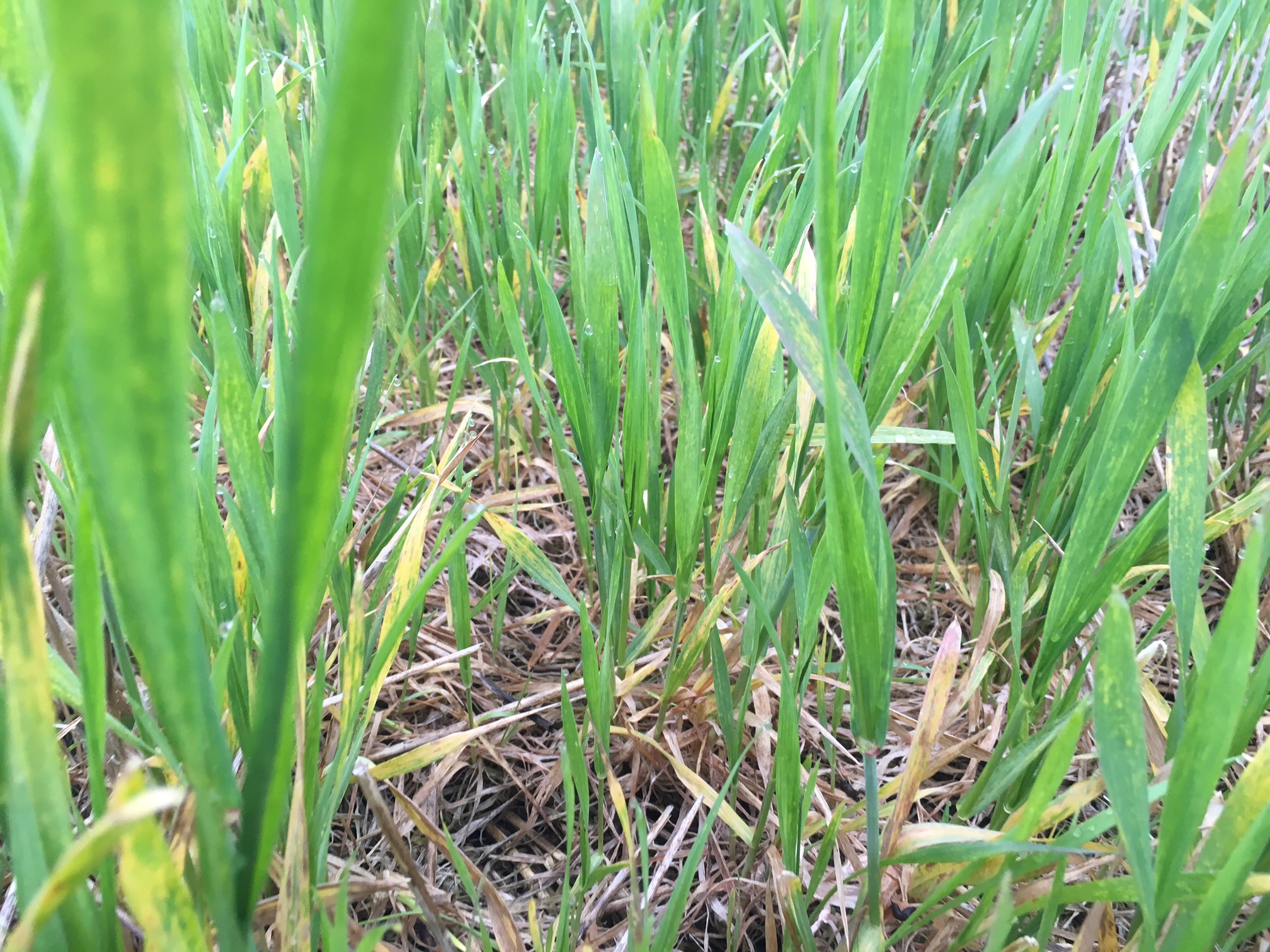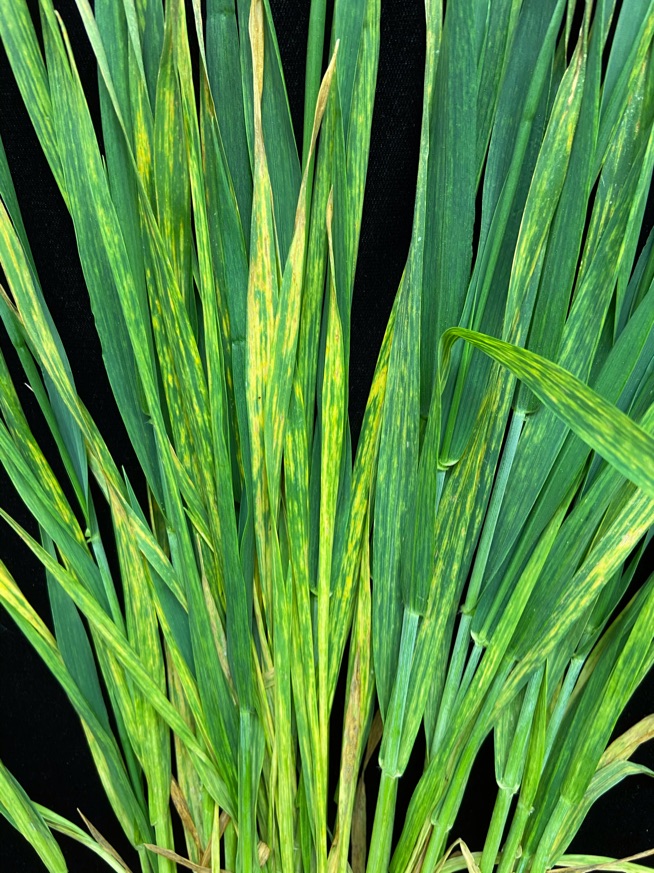Viruses detected in Michigan wheat
Act now for diagnosis of wheat streak mosaic virus and wheat spindle streak mosaic virus.

The Michigan State University Plant & Pest Diagnostics lab receives samples from Michigan wheat growers. Samples that are symptomatic are tested for several viruses; this work is supported by funding from the Michigan Wheat Program. Viral symptoms in wheat can include yellowing or purpling, flecking on the foliage, and stunting. Two different wheat viruses, wheat streak mosaic and wheat spindle streak, were confirmed in samples received this growing season. While the names are similar, there are significant differences in the biology of these two wheat viruses.
Growers that are concerned about viral symptoms on wheat can submit samples to the lab now, while the plants are still green, for testing and evaluation. Knowing what viruses are present in this year’s wheat crop is critical to making good management decisions for the future. The Michigan Wheat Program will cover the diagnostic fees for wheat samples submitted by Michigan wheat growers. Read how to best collect samples or watch this video: Sampling Wheat for Diagnostics).
Wheat streak mosaic virus
This viral disease occurs throughout the wheat growing areas of the U.S. and can cause significant crop loss. The impact of the virus on wheat production is influenced by several factors including the age of the wheat at the time of infection, the wheat cultivar, the specific virus strain, and environmental conditions. Infections that occur in young plants are more damaging, but wheat that is infected in the fall may not show symptoms until the following spring. The disease occurs in other grains including barley, rye and oats, as well as in perennial grasses and corn.
The virus is spread by an insect vector, the wheat curl mite. Once the mite acquires the virus it can remain infectious, spreading it to wheat and other hosts during feeding over a period of seven to nine days. Winds can carry the mites and thus facilitate the spread of infected mites over long distances.
Areas with more volunteer wheat, which creates a "green bridge affect,” also have an increased risk of wheat streak mosaic virus. The pattern of disease in the field often demonstrates a border effect from the source of the wheat curl mites and virus. Volunteer wheat has caused increases of this disease in Michigan in previous years. It is interesting to note that in the late summer of 2020, a combination of environmental, disease and economic factors in the Great Plains region of the U.S. led to local predictions of higher levels of wheat streak mosaic virus in 2021.
Disease management must be based on prevention, once plants are infected there are no treatment options. Managing volunteer wheat is one of the most important steps that can be taken to manage the disease, volunteer wheat should be destroyed at least two weeks before emergence of fall planted wheat. Delay seeding of fall planted wheat to the extent possible, this allows time for the mite population to naturally decline prior to emergence of new plantings. Wheat cultivars with tolerance or resistance are available and should be considered in areas with increased risk.

Wheat spindle streak mosaic virus
As the name indicates, disease symptoms include spindle shaped yellow streaks on the foliage. The streaks are parallel to the leaf veins and may become necrotic. Symptoms can be more apparent toward the leaf tips. Plants can also be stunted, have fewer tillers, and produce fewer seeds with reduced kernel size. Foliar symptoms become less noticeable as the crop gets closer to harvest. Wheat spindle streak occurs in wheat growing areas of North America but is more common in the Great Lakes area. Most damage is reported on wheat, but rye and triticale can also be infected.
This virus is believed to be vectored by Polymyxa graminis, an organism that is naturally found in soil. In the absence of wheat spindle streak mosaic virus, P. graminis does not cause any harm to wheat. There is no known insect vector for wheat spindle streak mosaic virus. But movement of the pathogen can occur when infested soil is moved, for example on cultivars and other field equipment used in infested fields. Hence, the pattern of disease in the field tends to occur around field entrances, and low spots where water collects.
Environmental factors (temperature and moisture) influence both the risk of infection and symptom development. Infections that occur in the fall are more likely to result in symptoms and decrease crop yield. Prolonged cool and wet periods in the spring favor symptom development, disease progress halts once temperatures reach 65 degrees Fahrenheit. In contrast, spring infections result in fewer symptoms and have less yield impact.
The virus can remain in soil for long periods of time, even in the absence of a host crop. Wheat cultivars with disease resistance should be used in fields that have a history of wheat spindle streak mosaic virus. Crop rotation is not an effective disease control strategy.

For more information, see "Compendium of Wheat Disease and Pests, Third Edition" by W.W. Bockus et. al.



 Print
Print Email
Email